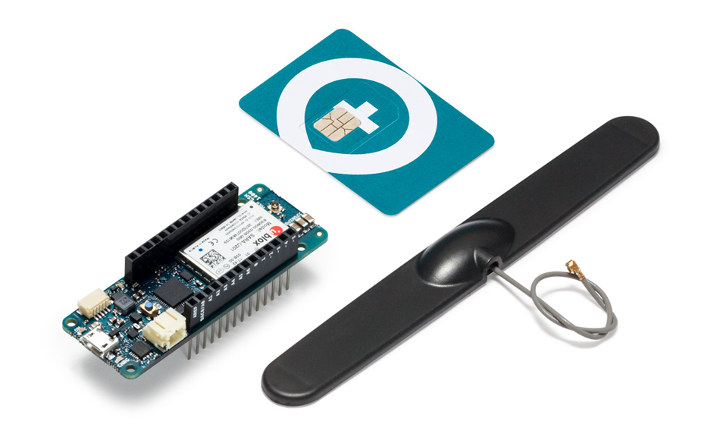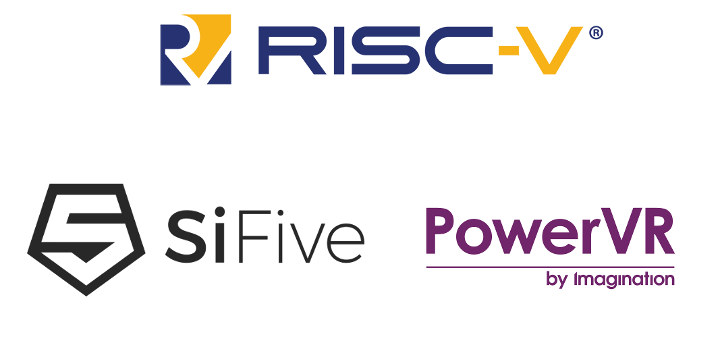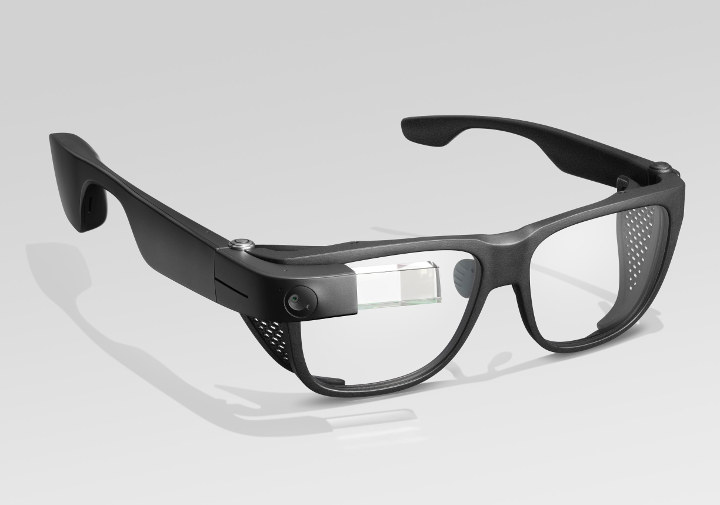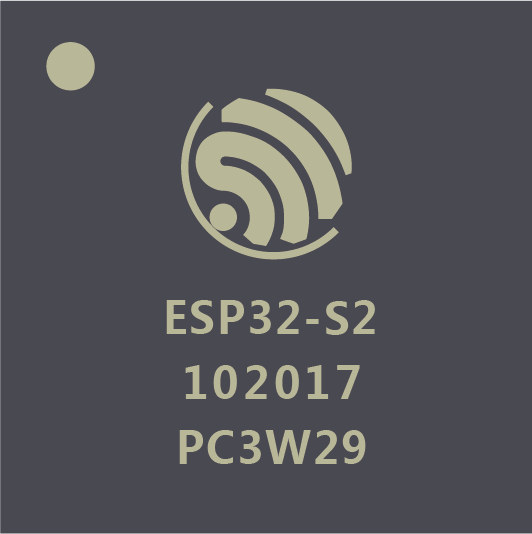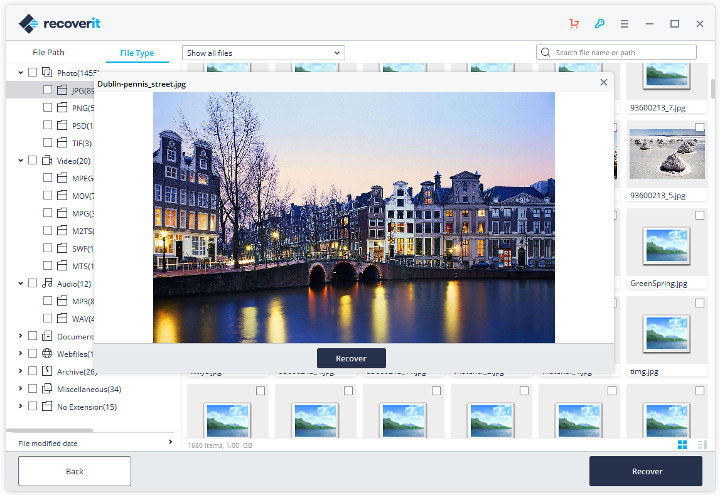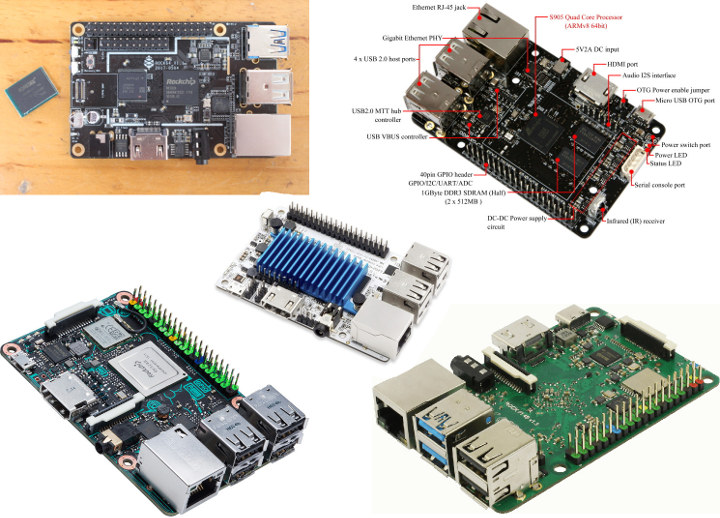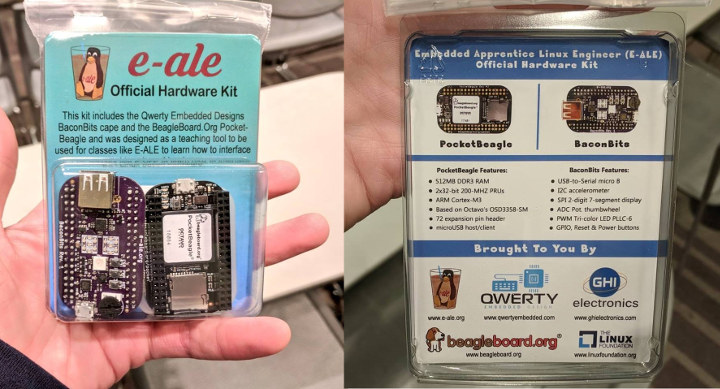I’ve been using Hologram developer SIM card for cellular IoT hardware reviews since it’s really great for evaluation as the company offers 1MB of data for free monthly. It’s supposed to work worldwide, but recently I discovered that while 3G worked fine in Thailand, the card would not support NB-IoT just yet. More companies are now offering this type of global cellular IoT SIM cards such as Twilio or SORACOM, and Arduino is now joining the fray by offering the Arduino SIM card specifically designed to connect to Arduino IoT cloud. The Arduino SIM card currently works with Arduino MKR GSM 1400 board only, and Arm Pelion Connectivity Management provides the cellular service with a global roaming profile than enables connectivity in over 100 countries at a low cost. The first 90 days are actually free if you use less than 10MB of data, after which the price is 5MB […]
HongMeng OS is Huawei’s Alternative to Android (Rumor)
If you’ve been following the news, you must know Huawei was hit by trade restrictions from the US government, and US companies announced they’d comply meaning Intel, Google, Qualcomm, Microsoft, Xilinx, and others announced they’d have to mostly stop doing business with Huawei. At first, it seemed like all Google services would stop working on existing Huawei phones, but it’s not that bad, and apparently, it only impacts phones sold after May 16. Everything is still in flow, so it may take a while for things to settle down, and find out what the practical implications will be. Nevertheless, upon reading the news, I thought it would be a boon for projects like /e/ operating system that works without closed-source binaries from Google, but it turns out that Huawei is working on its own operating system called HongMeng (鸿蒙) OS according to Chinese media reports. We don’t have a whole […]
SiFive RISC-V Processors to Support Imagination PowerVR GPU and NNA IP Cores
RISC-V is getting more popular and mature as development progress, but if you want a system with RISC-V and a GPU so far you had to use a PCIe graphics card which is not cost-effective nor practical for most applications based on RISC-V processor. What is needed is some GPU IP that will glue with RISC-V core. Developing a new GPU is not an easy task (understatement of the month) so it would make sense to go with solutions available on the market. However, Arm Mali is tied to Arm Cortex cores and Arm is unlikely to want to help RISC-V take away their market share, and Adreno and VideoCore are owned by respectively Qualcomm and Broadcom which are unwilling to provide their GPU IP to third parties. This basically leaves us with Vivante and Imagination. Vivante may have made the most sense since open-source graphics drivers do exist (Etnaviv), […]
Google Glass Enterprise Edition v2 Features Snapdragon XR1 Processor
To be honest, I was pretty happy when it was clear that smart glasses for the consumer market would not take off, and I would be living in a better, smart glasses-free, world. But I also reckoned that those could have use in professional settings, and Google Glass Enterprise edition was first spotted in 2015 with an Atom processor. The company has now launched an upgraded model with Google Glass Enterprise Edition v2 powered by Qualcomm Snapdragon XR1 eXtended reality (XR) platform. Google Glass Enterprise Edition v2 specifications: SoC – Qualcomm Snapdragon XR1 quad-core Kryo processor @ 1.7GHz with Adreno GPU, Qualcomm AI Engine for on-device processing; 10nm manufacturing process System Memory – 3GB LPDDR4 Storage – 32GB eMMC flash storage Display – 640×360 Optical Display Module Audio out – Mono Speaker, USB audio, BT audio Microphones – 3 beam-forming microphones Camera – 8MP, 80 DFOV Connectivity – Wi-Fi 5 […]
Espressif ESP32-S2 Secure WiFi MCU Comes with an Xtensa LX7 Core @ 240 MHz
Espressif Systems has unveiled a new ESP32 WiFi MCU based on Cadence (previously Tensilica) Xtensa LX7 core instead of the usual Xtensa LX6 core(s). ESP32-S2 is powered by a single Xtensa LX7 core clocked at 240 MHz, supports Wi-Fi HT40 @ 2.4 GHz, and provides up to 43 GPIOs. Espressif ESP32-S2 specifications: CPU – Cadence Xtensa single-core 32-bit LX7 microcontroller @ up to 240 MHz, and ultra-low-power co-processor System Memory – 320 kB SRAM, external SPIRAM support up to 128 MB in total, 16 KB RTC memory Storage – 128 kB ROM, up to 1 GB of external flash support Connectivity Wi-Fi 802.11 b/g/n 1×1 transmit and receive with HT40 support with data rate up to 150 Mbps Support for TCP/IP networking, ESP-MESH networking, TLS 1.0, 1.1 and 1.2 and other networking protocols over Wi-Fi Support Time-of-Flight (TOF) measurements with normal Wi-Fi packets I/O & peripherals 43x programmable GPIOs 14x […]
Sponsored: Recoverit 8.0 Data Recovery Software Works on Windows & Mac OS
You should always backup your data as it may become lost or corrupted due to hardware failure, user’s mistakes, or bad actors. However, if your data appears to be truly lost, and backup is not available, it’s possible to use data recovery software such as Wondershare Recoverit Data Recovery available for Windows and Mac OS. The program will scan your computer or specific folder/storage device to locate any kind of deleted or corrupted files and ask you which files or/and folders to retrieve. This works on drives that have been corrupted due to a crash or power failure, formatted by mistake, and so on and the program can handle both internal and external drives. Wondershare has recently released Recoverit 8.0 version with various new features and improvements: Simpler and more user-friendly interface – Recoverit 8.0 comes with a simpler and more user-friendly design as shown above. The software will show […]
Top 5 Raspberry Pi Alternatives in 2019
The Raspberry Pi boards are great little Arm Linux SBC’s with a low price and great community support. But the Broadcom processors used in the boards are also fairly old so they may not be suitable for some projects. If your application needs or would benefit from modern features such as memory over 1GB RAM, an actual Gigabit Ethernet port, USB 3.0 port(s), 4K video output, or H.265 hardware video decoding you’ll have to find Raspberry Pi alternatives. I’ll point out 5 alternative single board computers in this post from the point of view of existing Raspberry Pi users, who will want good software support and a board with the same or similar form factor as Raspberry Pi 3 Model B/B+ in order to reuse their add-on boards and/or enclosures. Price has to be competitive as well, so nothing above $80 will be mentioned. The boards are not listed in […]
E-ALE is a Free & Open Source Linux Training Program for Embedded Engineers
As I wrote about the Embedded Linux Conference 2019 schedule a few days ago, I found out one of talk planned to use E-ALE hardware kit for the session. I had never heard about this kit, but a quick search led me to e-ale.org website which explains E-ALE stands for Embedded Apprentice Linux Engineer. The training program is made for embedded engineers with experience designing firmware for microcontrollers, but now need to transition to embedded Linux. Training only happens in-person (no webinar) at existing Embedded Linux conferences and is comprised of 8 to 9 seminars over 2 to 3 days. It usually starts with a presentation on one subject, followed by lab time to practice the relevant learned skills. The training takes place on the E-ALE kit at each conference, but it does not refer to a specific hardware platform. In most conferences, the PocketBeagle and BaconBits add-on board are […]


